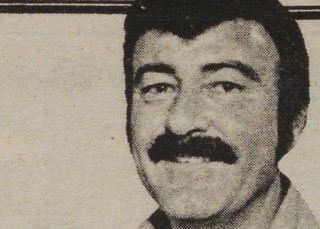
Speaker Series
Mapping Queer America:
A Conversation with Gina Gatta and Jim Gladstone on the Legacy of the Damron Guides
Friday, July 18, 2025
Lecture:
7 - 8:30 PM PST
Main Gallery
Free to Members and the Public
Join Gina Gatta, longtime publisher of the Damron Guides, and writer Jim Gladstone for a special conversation exploring the groundbreaking legacy of the Damron Men’s Travel Guide, the iconic publication that mapped gay bars and gathering spaces across America for over five decades. Through stories, visuals, and discussion, Gatta and Gladstone reveal how these guides fostered safety, connection, and community for generations of queer travelers—long before GPS or social media made being seen a little easier.
Or join us on Zoom!!
https://us06web.zoom.us/j/83733317475
Long before apps, hashtags, or search engines could point queer travelers toward affirming spaces, there was Damron. On Thursday, July 18 at 7:00 PM, join us in the Main Gallery of the Bob Mizer Foundation for an evening with Gina Gatta, longtime publisher of the Damron Guides, and Jim Gladstone, author and cultural historian, as they explore the extraordinary history and legacy of these iconic travel companions. First published in 1965—four years before Stonewall—the Bob Damron Address Book served as an underground atlas for generations of gay men. These pocket-sized volumes mapped the secret geographies of bars, bathhouses, bookstores, and cruising grounds across the U.S. and beyond, offering not only directions but a sense of connection and safety.
Gatta, who helmed Damron for over 25 years, guided the publication through the AIDS epidemic, the rise of digital culture, and the growing visibility of LGBTQ+ communities. Her experience as both caretaker and publisher gives her a singular perspective on Damron’s role in shaping queer life across decades. Now actively preserving the Damron archive through institutional donations, she brings a deeply personal and historically significant voice to the conversation.
Jim Gladstone, a journalist and author whose work chronicles queer nightlife and print culture, offers a broader cultural context for Damron’s significance. His writing connects the guide to other forms of subcultural expression—from protest zines to physique magazines—placing it within a continuum of underground LGBTQ+ publishing and resistance. Together, Gatta and Gladstone will unpack how the guides operated as tools of survival, socialization, and self-recognition for generations of gay men across America.
Featuring visual artifacts, stories from the road, and a live Q&A, this evening will resonate with anyone interested in queer history, publishing, geography, and the ways LGBTQ+ people have built and sustained community—often with nothing more than a list of addresses and a sense of hope. Don't miss this chance to explore one of the most important, and too often overlooked, artifacts of modern gay life.
Watch the Event
Mapping Queer America:
Recorded Friday, July 18, 2025